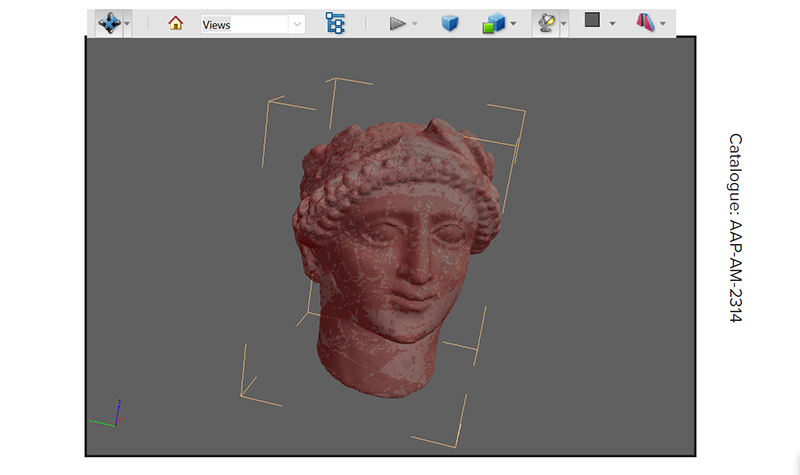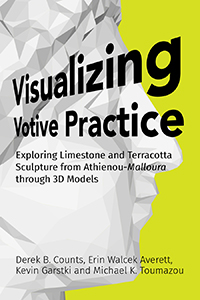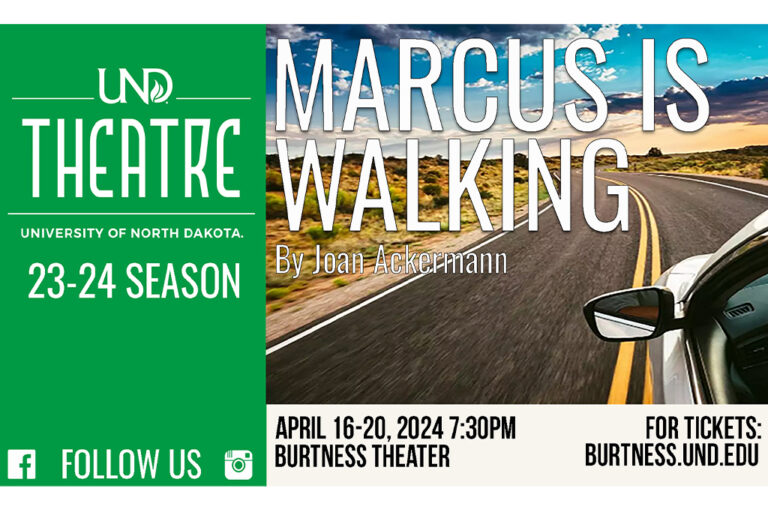New book brings 3D technology to ancient Cypriot sculptures
Published by The Digital Press at UND, ‘Visualizing Votive Practice’ makes archaeological artifacts ‘come alive on the page’

A digital book published this week at UND uses 3D technology to let readers study, examine and enjoy 2,500-year-old sculptures from Cyprus in a remarkable new way.
The book, “Visualizing Votive Practice: Exploring Limestone and Terracotta Sculpture from Athienou-Malloura through 3D Models,” was published by the Digital Press at the University of North Dakota. It was written by Derek B. Counts, professor and chair of Art History at the University of Wisconsin-Milwaukee; Erin Walcek Averett, associate professor of Art History and Classical & Near Eastern Studies at Creighton University; Kevin Garstki, lecturer in the Department of Anthropology, Global Religions, and Cultures at the University of Wisconsin-Oshkosh; and Michael Toumazou, professor of Classics at Davidson College in North Carolina.
 “Visualizing Votive Practice” uses 3D images embedded directly in the PDF to present a significant new group of terracotta and limestone sculpture from the sanctuary of Malloura on Cyprus. The idea is that by combining traditional features of an archaeological artifact catalogue with the dynamic possibilities of a digital book, these fascinating objects will come alive on the page, the authors suggest.
“Visualizing Votive Practice” uses 3D images embedded directly in the PDF to present a significant new group of terracotta and limestone sculpture from the sanctuary of Malloura on Cyprus. The idea is that by combining traditional features of an archaeological artifact catalogue with the dynamic possibilities of a digital book, these fascinating objects will come alive on the page, the authors suggest.
The book also includes thousands of hyperlinks that invite the reader to engage with objects at the world’s greatest museums, explore previous scholarship, and learn more about Cyprus, a Mediterranean island uniquely situated at the crossroads of Europe, Asia, and Africa. Cyprus has been inhabited since as far back as the Stone Age; some of the water wells discovered there, dated at 9,000 to 10,500 years old, are believed to be among the oldest in the world.
“Visualizing Votive Practice” provides an important discussion of the theory, methods, and practices that produced the 3D images in archaeology. It is available from The Digital Press as a free, open access, download.
“We wanted to challenge traditional approaches to publication and leverage open, digital platforms to provide better access to our research but also connect that research with a wider network of information,” said co-author Derek Counts.
Co-author Kevin Garstki agreed. “The book builds upon the available platforms for sharing 3D models and combines them with important archaeological context that makes them more than just ‘pretty’ models on a computer screen but actual research tools,” Garstki said.

The site of Malloura on the Mesaoria Plain on Cyprus is significant in its own right. “This sanctuary is one of the few religious sites to be excavated scientifically and provides a wealth of information on changing Cypriot religious practices from the Cypro-Geometric through Roman periods (ca. 8th c. BCE to at least the 4th c. CE),” said co-author Erin Walcek Averett.
“From terracotta warrior figurines to limestone statues of Cypriot Herakles, this votive assemblage enriches our understanding of the cult and ritual habit at the site.”
In art, the word “votive” usually refers to an object offered to a god or goddess at a sacred place, such as a temple.
The book also relies on the Alexandria Archive’s Open Context digital, archaeological publishing platform. Each object in the book is linked to a permanent digital version on the web, allowing future researches to link to a specific artifact and for the catalogue to expand and develop in the future.
The digital publication of these artifacts “allows for continued expansion of the collection, as well as the addition and association of other related archaeological materials — such as the ceramic vessels, coins, and animal bones — facilitating exploration and reuse of the ever-growing collection, even for purposes not currently recognized in the context of the Visualizing Votive Practice publication,” explained Eric Kansa, Open Context’s program director.
William Caraher, the director at the Digital Press at the University of North Dakota, said that “open-access books such as ‘Visualizing Votive Practice’ shows the potential to combine rigorous peer review and innovative collaborative publishing practices. Scholar-led publishing is not the only future for academic publishing, but works such as this are starting to make the case for it being a viable and significant alternative to traditional academic and commercial publishers.”


